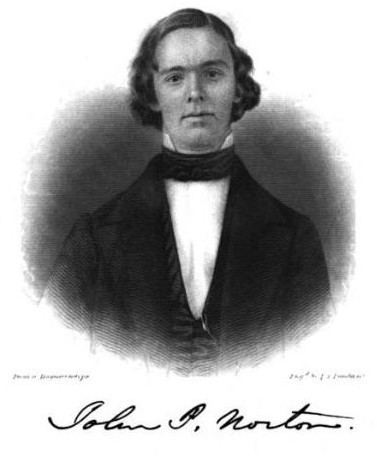Name John Norton | Role Chemist | |
 | ||
Books Elements of scientific agriculture, or, the connection between science and the art of practical farming | ||
John Pitkin Norton (July 19, 1822 – September 5, 1852) was an educator, agricultural chemist, and author.
Contents
Biography
Norton was born in Albany, New York in 1822, where his father John Treadwell Norton, a successful farmer and engineer, owned a hardware store. His mother, Mary Hubbard Pitkin, married his father in 1821 and died in 1829. He and his father returned to Farmington, Connecticut to live on land his father inherited from his grandfather John Treadwell, former governor of Connecticut.
Norton studied chemistry under Benjamin Silliman at Yale College, and was eventually appointed professor of agricultural chemistry at Yale in 1846. He helped to found the Department of Philosophy and the Arts at Yale with Silliman's son, Benjamin Silliman, Jr., which would later become the Sheffield Scientific School and the Graduate School of Arts and Sciences. He was the author of Elements of Scientific Agriculture (1850), and many scientific papers, dealing with the chemistry of crops. During his short teaching career at Yale (1846–52), he took Samuel William Johnson as a pupil, who would later become one of the country's foremost educators in scientific agriculture.
Norton succumbed to tuberculosis at the age of 30, and died in Farmington, Connecticut in 1852. He is buried in Grove Street Cemetery in New Haven, Connecticut.
Legacy
Norton is one of the few scientists recognized in the United States Capitol in Washington DC. A small statue of him is on the Edmond Amateis bronze doors. (See pp. 350 – 351 of Art in the United States Capitol, 1978, US Government Printing Office.)
Norton's house, completed in 1849 and designed by Henry Austin to resemble an Italian villa, was included in the federal government's Historic American Buildings Survey as the John Pitkin Norton House. It was purchased by Yale in 1923 and is now known as Steinbach Hall.
